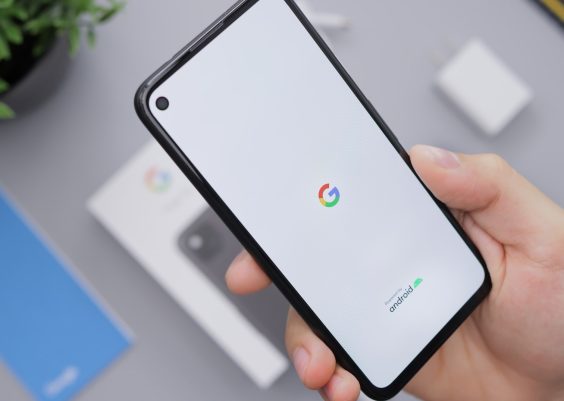Getting around inside big buildings isn’t always easy. Ever felt lost in a mall or confused in a hospital? You’re not alone. Now imagine how tricky it could be for someone who’s blind or uses a wheelchair. That’s where LED indoor navigation comes to the rescue!
Contents
TL;DR
LED indoor navigation helps people find their way inside buildings using smart lights. It’s a big win for accessibility, especially for people who are blind or have mobility issues. It can guide users with turn-by-turn directions, spoken cues, or phone vibrations. This tech is making buildings easier to explore for everyone.
LED indoor navigation is a new way to guide people through indoor spaces. It uses special LED lights, combined with sensors and smartphones, to show you where to go. These systems can work even when GPS signals don’t, like in basements or huge shopping centers.
It’s kind of like having a mini GPS for inside buildings. But instead of satellites, it uses light signals to figure out where you are. Pretty cool, right?
Why It Matters for Accessibility
Let’s say you’re navigating a busy airport. For most people, it’s a hassle. For someone who’s blind or in a wheelchair, it can be overwhelming.
LED navigation helps make indoor spaces inclusive for everyone. Here’s how:
- Turn-by-Turn Guidance: People with vision impairments can receive voice instructions via their phones.
- Optimal Routes: Wheelchair users get paths tailored to ramps and elevators, not stairs.
- Real-Time Adaptation: If your route is blocked, the system finds a new one instantly.
- Multi-Language Support: Helpful for travelers who don’t speak the local language.
Imagine walking into a museum and your phone guides you straight to the Monet gallery — without needing to ask for help. That’s the magic of smart lighting.
How It Works
Want to know the techy bits? Here comes the fun part.
- LED lights send invisible signals.
- Your smartphone’s camera or special sensors pick them up.
- The app figures out where you are and gives directions from that spot.
- As you move, it updates in real time!
Because lights are everywhere (ceilings, elevators, hallways), the system can guide you through complex indoor spaces easily.

Benefits People Don’t Always Think Of
Sure, it’s helpful for getting from A to B. But that’s just the beginning! LED indoor nav brings lots of surprising benefits, especially for accessibility.
- Confidence & Independence: People who usually rely on others can now explore on their own.
- Less Stress: Ever been late to a doctor’s appointment because you got lost? Not fun. Navigation helps everyone feel less anxious.
- Better Safety: In emergencies, people can be guided out quickly and safely, even if visibility is poor.
- Customized Experience: Museums can provide audio descriptions triggered by lights as users move room to room.
It’s not just access. It’s *empowerment*.
Real-Life Use Cases
Let’s look at where this tech is already making a difference:
- Airports: Helping travelers find gates, restrooms, or baggage claim.
- Shopping Malls: Navigating to specific stores, food courts, or exits.
- Hospitals: Providing clear directions between departments — critical for people with health issues.
- Universities: Students can find lecture halls or disability services easily.
- Museums: Offering guided tours for people who are blind or hard of hearing.
In fact, some hospitals have already reduced appointment no-shows by helping patients find the right clinic faster. That’s a big win for everyone.
Why LEDs?
LEDs aren’t just fancy lights. They have super powers. Let’s break it down:
- Energy Efficient: LED lights use less power and last longer.
- High Accuracy: They can pinpoint your location to within a few feet — sometimes even better than GPS.
- Affordable: Once the system is set up, it’s cheap to operate.
- Already Installed: Many buildings already use LED lighting, so it’s easy to upgrade.

It’s like turning something ordinary — lightbulbs — into something extraordinary.
Challenges to Solve
Okay, nothing is perfect. Even LED indoor navigation has a few bumps in the road.
- Phone Compatibility: Not all phones pick up the LED signals perfectly.
- Cost of Upgrades: Older buildings may need some rewiring.
- Training: Staff might need to learn how to help people use the system.
But the good news? Tech keeps improving. And once more people see the benefits, adoption gets easier.
The Future Looks Bright (Pun Intended!)
LED indoor navigation is part of a bigger movement: making spaces smarter and more inclusive. And the future looks exciting.
Imagine adding voice recognition or AI into the mix. Or linking it with wearable tech for people with cognitive challenges. The possibilities are endless.
Everyone deserves to feel confident and safe when moving through a space. LED indoor nav helps make that happen.
Final Thoughts
So, next time you’re trying to find the food court or the right classroom, imagine a light system guiding you there. No stress. No confusion.
But more importantly, think of how this helps someone in a wheelchair, or a person who’s blind, feel just as at home in that space as anyone else. That’s the real benefit of LED indoor navigation.
It’s tech with heart. And light. Lots and lots of light.



